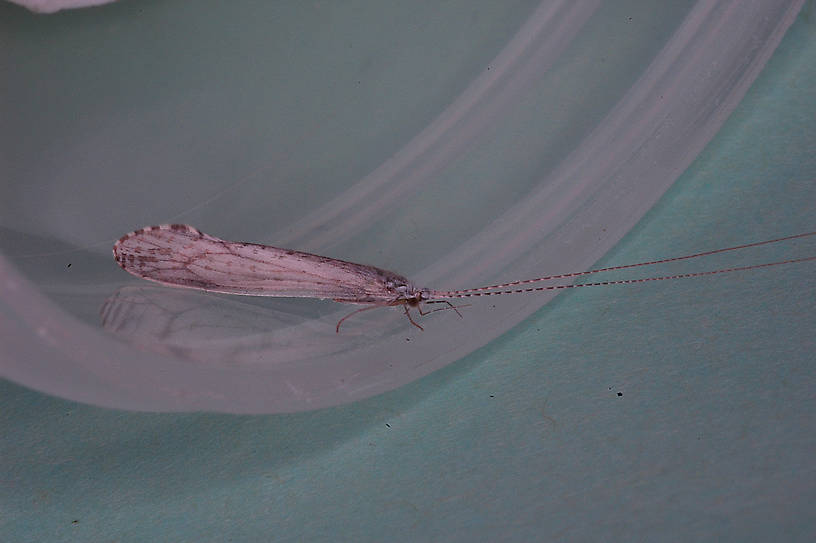
Hex Mayflies
Hexagenia limbata
The famous nocturnal Hex hatch of the Midwest (and a few other lucky locations) stirs to the surface mythically large brown trout that only touch streamers for the rest of the year.
Featured on the forum

I was not fishing, but happened to be at an unrelated social event on a hill above this tiny creek (which I never even saw) when this stonefly flew by me. I assume it came from there. Some key characteristics are tricky to follow, but process of elimination ultimately led me to Sweltsa borealis. It is reassuringly similar to this specimen posted by Bob Newell years ago. It is also so strikingly similar to this nymph from the same river system that I'm comfortable identifying that nymph from this adult. I was especially pleased with the closeup photo of four mites parasitizing this one.

Troutnut is a project started in 2003 by salmonid ecologist Jason "Troutnut" Neuswanger to help anglers and
fly tyers unabashedly embrace the entomological side of the sport. Learn more about Troutnut or
support the project for an enhanced experience here.
White Millers
There is a lot of confusion about the meaning of this name. Remember, though, that it is just a common name, and nobody's really wrong or right. The most prominent and "correct" interpretation is that it refers to Nectopsyche caddisflies, but it is frequently applied to Ephoron mayflies (which are more often called White Flies) or even to whitish aquatic moths.
Like most common names,"White Miller" can refer to more than one taxon. They're previewed below, along with 1 specimen. For more detail click through to the scientific names.
Caddisfly Genus Nectopsyche
These are pretty much always called White Millers.
The common name White Miller is usually applied to this entire genus, although it was created for the very prolific species Nectopsyche albida. Some of the other species are darker-colored.
Most of the adult activity, both emergence and egg-laying, takes place during the middle of the night. There is some rare overlap with the low-light hours of dusk and dawn, but this genus really belongs to the night fishermen.
Most of the adult activity, both emergence and egg-laying, takes place during the middle of the night. There is some rare overlap with the low-light hours of dusk and dawn, but this genus really belongs to the night fishermen.

This is Nectopsyche lahontensis.
Mayfly Genus Ephoron
These are very rarely called White Millers.
On certain rivers in late summer the Ephoron mayflies gives new meaning to the words "blizzard-like hatch," because their large white bodies give a true snowstorm appearance to their enveloping swarms. This is the most intense aquatic insect hatch of the year in places, and sometimes the flies are so thick that it's hard to get a trout to find one's imitation among the carpet of real insects on the water.
Ephoron leukon is most important species in the East and Ephoron album in the West. They overlap in the Midwest. These are the only two mayflies of this genus recognized in the United States, but Caucci and Nastasi in Hatches II report inspecting specimens which did not fit the description of either species.
Ephoron leukon is most important species in the East and Ephoron album in the West. They overlap in the Midwest. These are the only two mayflies of this genus recognized in the United States, but Caucci and Nastasi in Hatches II report inspecting specimens which did not fit the description of either species.
References
- Caucci, Al and Nastasi, Bob. 2004. Hatches II. The Lyons Press.

